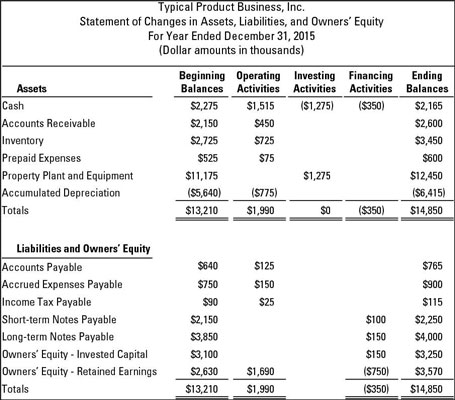Assets - Liabilities Owners Equity So the simple answer of how to calculate owners equity on a balance sheet is to subtract a business liabilities from its assets. Liabilities are separated into stockholders equity. The balances of the members equity are shown under the equity section in the balance sheet of the LLC. Your question of presenting the equity of an LLC that elected S is interesting. As a result it has members not shareholders and issues units not common stock. Owners equity sections can be divided into two main sub-divisions. Repayment of Debt Wages Advertising Travel. Accumulated Depreciation TOTAL ASSETS CURRENT LIABILITIES. The amount may be reported as a single amount described as owners capital. The Basics Going back to Accounting 101 the equity section of the balance sheet represents all investments made into a company from all sources.
Accumulated Depreciation TOTAL ASSETS CURRENT LIABILITIES. The balances of the members equity are shown under the equity section in the balance sheet of the LLC. Balance sheet disclosure is preferred. The equity section is meant to show the owners capital. Owners equity sections can be divided into two main sub-divisions. Accounts Payable Depreciation Insurance Rent Utilities CASH FLOWS FROM OPERATING ACTIVITIES. If a business owns 10. Your question of presenting the equity of an LLC that elected S is interesting. CASH FLOWS FROM INVESTING ACTIVITIES. Balance sheet is a representation of the financial position of an organization for specified date.
CASH FLOWS FROM FINANCING ACTIVITIES. Owners equity sections can be divided into two main sub-divisions. Balance sheet is a statement. Even the generalist is likely to recall that the balance sheet reflects the age-old equation. The equity section is meant to show the owners capital. There are three common components to stockholders equity. Accumulated Depreciation TOTAL ASSETS CURRENT LIABILITIES. Paid-in capital and treasury stock involve transactions dealing with corporate stock issuances. Paid-in capital and retained earnings. If a business owns 10.
If a business owns 10. Accordingly for financial statement purposes the equity section becomes more of a hybrid presentation. I would present on the Balance Sheet Equity. The equity section of the balance sheet for a corporation shows the claim these shareholders have to the net assets of the business. Accumulated Depreciation TOTAL ASSETS CURRENT LIABILITIES. Assets Liabilities Equity. Paid-in capital treasury stock and retained earnings. When an LLC makes the election to be taxed as an S-corporation one of the most important things to remember is that the entity is still legally an LLC. It may also be known as shareholders equity or stockholders equity if the business is structured as an LLC or a corporation. Paid-in capital and treasury stock involve transactions dealing with corporate stock issuances.
The equity section of the balance sheet for a corporation shows the claim these shareholders have to the net assets of the business. The balances of the members equity are shown under the equity section in the balance sheet of the LLC. I would present on the Balance Sheet Equity. Paid-in capital treasury stock and retained earnings. When an LLC makes the election to be taxed as an S-corporation one of the most important things to remember is that the entity is still legally an LLC. Owners equity sections can be divided into two main sub-divisions. The equity section of the balance sheet equals assets minus liabilities. This would be recorded as an intangible asset balance sheet account. Assets - Liabilities Owners Equity So the simple answer of how to calculate owners equity on a balance sheet is to subtract a business liabilities from its assets. Balance sheet is a representation of the financial position of an organization for specified date.
